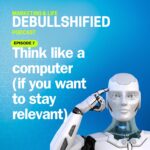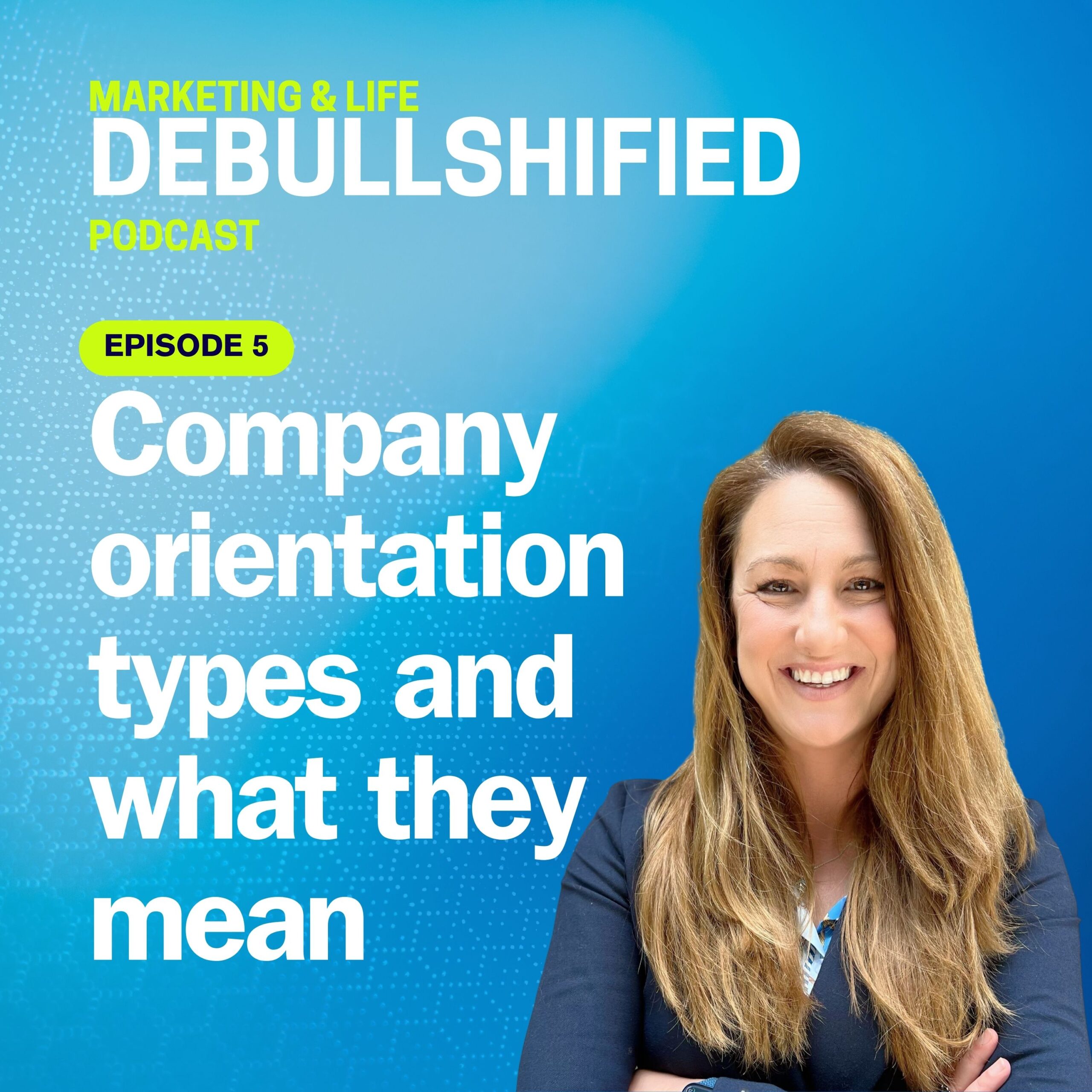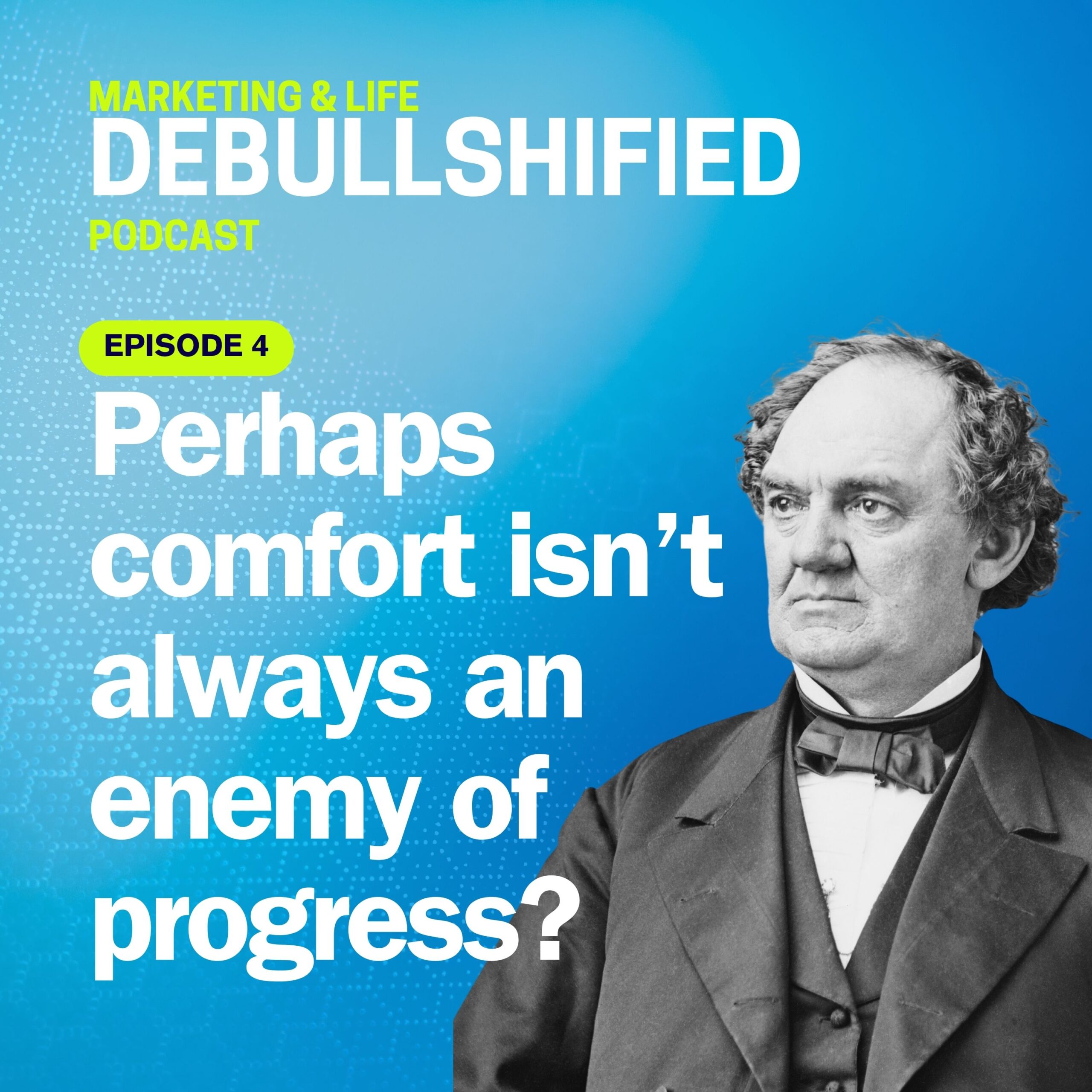
Hello and welcome to the 7th episode of Debullshified – our break it or make it episode. Why, you ask? Because statistically around 90% of all podcasts don’t continue after their 7thepisode. So, let’s hope that we return next week. Just kidding, we will.
Before we begin, this is your reminder that Debullshified is a place where we talk about marketing, business, and life. This podcast is for critical thinkers, savvy entrepreneurs and curious minds of all walks of life. Here, we worship no gods nor celebrities. We learn, we laugh, and we think independently.
The task for today is quite ambitious. By the end of this episode, I will attempt to explain in laymen’s terms how computers think and most importantly, what part of that we humans need to understand and be able to replicate so we can remain relevant. I’ll also try my best to inspire you, although I will firstly need to scare you a little bit… But bear with me, I promise it’s going to be worth the ride!
The latest changes in the world of tech have been emotional…
Wherever on the fence between fear and excitement you are, you can’t ignore the fact that the last few years have been turbulent and so much new technology has emerged that many people have simply abandoned the idea of staying up to date with new developments.
You don’t need me to tell you this – you know it already. What nobody has been talking about is that we’re in for some serious turbulence and I don’t think anyone is realising it.
Here’s what I’m referring to. According to an article in Forbes with the lengthy title “Rising Use Of Artificial Intelligence Is Fuelling Anxiety In Business”, 65% of people are anxious that AI will make them obsolete. Let’s repeat this, so it sticks: 65% of the people report feeling anxious that AI will make them unnecessary.
This comes on the back of society not having completely recovered from the anxiety caused by the recent global pandemic and on top of this, struggling with the anxiety of increasing prices and decreasing buying power all over the world.
What we, as a society, fail to recognise right now is that this constant state of fear and anxiety is an avalanche in the making.
Why, you ask? People have been anxious since the beginning of time. Erm… Kind of, but not all the time and not like this.
When your anxiety is related to your physical survival, your body pulls together, fuels up with adrenaline, adrenaline makes you smarter and more agile, and you’re able to pull trough whatever adversity you find yourself in.
But today’s anxiety is not this type. It’s the type of anxiety you would feel if someone dropped you in the middle of the ocean and you know well enough that you’re surrounded by sharks. There’s no shore in sight, and even though you’re surrounded by people, they’re all just as helpless as you are.
If you’ve managed to visualise this, let me ask you the following. Can you please prepare the questions for your next 1-2-1 with your most senior subordinate?
Yes, I am asking you to do it while you’re trying to stay afloat and also while you’re trying to identify this shadow in the distance because you can’t quite tell if it’s just a wave or a shark’s fin.
Impossible, right?
Well, this is the state most people are in. It goes without saying that some are experiencing the anxiety more overwhelmingly than others, but ironically, the more intelligent a person is and the less likely they are to be out of a job, the higher the anxiety. Funny, but not funny ha-ha, right?
So, what does this tell you? To me, it means that worldwide we are actively incapacitating our most valuable people by creating uncertainty, after uncertainty, after uncertainty, all in the pursuit of always faster economic growth.
And whilst anxiety is tormenting the most capable among us, the less capable ones in society remain weaponised with ignorance. Ultimately, we’re slowly designing a funky version of Idiocracy (a film that I both hate and find myself recommending the entire time).
But wait! This isn’t a doom prophecy!
I know that everything I said so far doesn’t sound very promising. There is a way out and not every person with a high IQ is hiding in the corner, shivering with anxiety.
The way out is simple: through education.
Why? Because the only thing we truly fear is the uncertain. When we are in the know, when we can spot the sharks and identify them, we can manoeuvre well enough to protect ourselves. Or we can accept our destiny. Either way, anxiety will disappear which is always a win.
And since quite some of the anxiety is created by the evolution of technology, let’s debunk it.
So, let’s learn something about computer thinking that might just help you overcome worries and maybe you’ll be able to help someone else, too.
We’ll start with “If this, then that”
The simplest, most basic thinking on which all computer programming was based upon just until recently is the concept of “if this then that”. Usually, the “this”, would be a single activity. If the user clicks to minimise the window, hide the window from the screen. If the user selects some text and clicks on the B icon, make the text bold. You get it.
Often, however, the action will be one, but the outcomes might be many. For instance, if the user clicks on the image, make the image larger and darken everything around it. Or, if the user clicks to open Adobe Photoshop, it would be: load the app, connect to the account, verify this is a paying account and the subscription is up to date, load the brushes, load the colour palette, etc.
For each of those things to happen, a software developer needs to sit down and physically write the code that directs every action. He needs to tell the computer where the brushes will be stored, how to load the colour palette and all that jazz.
Boring, right? And we all thought computer programming was a fascinating thing to do, while in reality, the majority of the job is spent on writing similar instructions and making sure they don’t clash with instructions you’ve written 3 days ago and completely forgotten about.
The trickiest bit about computer programming is that every time you want your code to do something when prompted, you effectively have to feed it the information that it will be working with, a.k.a., the database.
Imagine it this way. If you wanted to have a very simple search that displays some results, you’d need to have a table with the possible results, a.k.a. the data, a field where you can type what you’ll search, and a button that will trigger the code. Once you type what you’re searching for and click the button, it will run through the table comparing what you’ve written with what it has and show you the result. But in order for this to happen, you have to tell your code that the table can be found on your desktop and that it’s titled “My New Data”, for example.
This is what traditional programming is and how computers used to think and as a matter of fact for the majority, they still do. You give your computer the data, you tell it what exactly you want it to do and what method to follow, and then it will give you the outcome.
How Machine Learning changed the game
Before AI became a thing, the wizards in the world of computers have been working on machine learning, which is effectively what enables AI in the first place. And if you think it’s something new, let me change your mind: machine learning (the modern version of it) has been in development solidly since 2012-2013. This is more than 11 years already. And the first time someone has spoken about it was in the 1950s, so the concept most certainly isn’t new.
Alongside this development from 2012, hardware has been growing its capacity, allowing computational power to increase. In simpler terms, you need less power when you’re performing simple tasks and more power when the tasks become more and more complex.
It’s the same for just about anything. You need less tools to remove the weeds from your small front garden, and a completely different set of tools to work your allotment, let alone a properly large agricultural plot. You see the connection.
So, add these two together (hardware power and ongoing work on machine learning models), top it up with a programming model called transformers which was introduced in 2017, and voila – here we are today with more and more AI tools left, right, and centre.
What’s the difference, you ask? Remember earlier on when we said that previously you’d have to supply the data and the method, and your computer would give you the result? Well, things have shifted dramatically. In the simplest words possible, nowadays you’d provide the data, you’d provide sample results, and you’ll let the machine figure out how you got these results from this data. By doing so, it will create its own method. Kind of like being thrown in a pool when you’re five so you can figure out swimming for yourself.
This is an incredibly large change. Creating the method is the reason that it took us forever to develop new software. The more complex the app or the program, the more time it would take a software developer to physically write every possible scenario using the “if this, then that” thinking.
Now, we’ll no longer have to do the same thing.
Is computer thinking starting to make sense?
I hope that so far, I was able to explain the changes even though I am by no means a computer specialist. All I am, is an incredibly curious person – the type that breaks down the radio to see how it’s done.
Now let’s see how this is going to change things and what we can realistically expect. Again, please note that I am no computer specialist, just a person who observes, reads, and has made quite a few accurate predictions.
First things, first, I genuinely believe that the giants are only about to get bigger. Here, I’m referring to all large technology companies that we’re already familiar with. Just like with everything else, the development of AI tools takes resource, and this resource is still largely human.
Some new companies will also appear. Again, as with everything else some companies will strike gold with innovative solutions and will be able to grow quickly. Others will muddy the waters and fall in oblivion. That’s life.
As consumers, we’ll see more and more enhancements on tools we’re already using. For example, right now you can use Google maps to get from point A to point B and it is rather single-minded. It only gives you the fastest route. The maximum flexibility you have right now is to avoid roads with toll taxes.
If you live in the UK, however, where highways get jammed on a regular, you’ll know that the alternative routes Google Maps will give you often aren’t an option. I’ve fallen victim to that multiple times and have driven on roads where you get to choose between not scratching your car’s paint and not colluding with another car. In the future, once AI gets involved with Google Maps we’ll be able to choose alternative ways based on a set of requirements, such as “I want to get from Oxford to Cambridge in up to 2 hours, but I want the most scenic roads where my car won’t get scratched by the bushes on the side of the road. Right now, not an option, but incoming.
Data analytics platforms will also become very different, and I personally find this fascinating. So far, analysing data has been one of the most challenging tasks and many companies are not at all data driven despite their claims. Why? Because it’s damn hard to get the data and even harder to clean it and analyse it.
But what about humans? Are we becoming obsolete because of AI?
I don’t think that there’s anyone out there, regardless of how educated, smart, or rich who can predict what’s going to happen. For all I know, by the time this whole thing unfolds the planet may not be suitable for living on anymore, so future generations might have a whole other set of problems.
For the time being, I don’t see the majority of the jobs being lost. Sure, some of them will be as we move forward in time and this predominantly relates to purely administrative, click in-click out type of jobs. The ones where you go for your soul to die, you know…
And even though for some people these jobs have been perfect, they’ll probably need to reskill.
Which leads me to my key point: learn how to challenge the status quo
Are we all swimming in the middle of the ocean surrounded by sharks that we can’t see? Yup… Sorry to have to bring up this visual again, but this is largely the reality for all of us.
In the middle of wars (in the 21st century – I can’t believe there are people still stupid enough), technological revolution, and global economic crisis there’s only one thing worth doing: challenging the status quo.
And I don’t mean starting a revolution and I don’t mean changing industries inside out. All I am referring to is finding more creative, better, more pleasure inducing, or at least easier way to do the tasks we have to do.
Instead of focusing on the doom and gloom that reality may seem quite often, I urge you to find ways to entertain yourself by challenging something you do regularly and working out ways to improve it.
Why? Well, because creative thinking and analytical thinking are amongst the two key skills that we’ll need to develop for the foreseeable future. I would have also mentioned people skills, but this has kind of always been necessary.
How do you develop your creative and analytical thinking?
A while back I heard someone ignorantly claime that creative skills are either innate or not existent. Nonsense.
EVERYONE IS CREATIVE
There isn’t a single person walking this planet who doesn’t have creativity thrust upon them. There are only people who haven’t had the opportunity to express it.
Creativity is like a muscle – the more you use it, the better it gets. You don’t have to trust me on that. Trust Elizabeth Gilbert with her book “Big Magic” or any other person who was able to silence their inner critic and unleash their creativity.
I could do an entire episode on it, but in a nutshell: if you want to be creative, start creating. If your job is in admin, start formatting your documents like a piece of art. If it’s in sales, start treating sales conversations like theatre plays – script them in advance or describe them afterwards. If your job is in finance, well, I’m lost there.
But there’s a way to creatively enrich everything that you do. In order to find your way, trial out different methods until one of them clicks and makes your mind do a happy dance. Try until you’ve found a million ways that don’t work. You can be creative about the processes in your office. You think a process needs to be improved? Design the improvement, demonstrate it, trial it, get it denied by senior leadership, re-design it and present it through another angle, get it shut down again. Change it based on critically assessing the world around us and constantly trying to make it at least a little bit better.
Every time you want to change something, try, and be ready to fail. Rinse and repeat until you make it. This is how you’ll find your creativity and the more you do, the better you’ll get at it. And whilst you’re doing this, you’ll be developing your critical thinking and your creative thinking.
It doesn’t happen by solving crosswords alone or doing sudoku – it’s about a series of small actions, it’s about constantly questioning everything.
Remember what it was to be a child? You’d always ask “Why?” This is what critical thinking is: the desire to understand the why’s of the world and then figure out if the how’s of the world are good enough for you. And if not, light up your creative mind and change it.
This is, my friend, how you’ll make yourself relevant with or without AI on the horizon and despite the changes that will be happening in the world. This is how you’ll find what moves you forward and while remaining relevant, you might just find what makes you happy.




